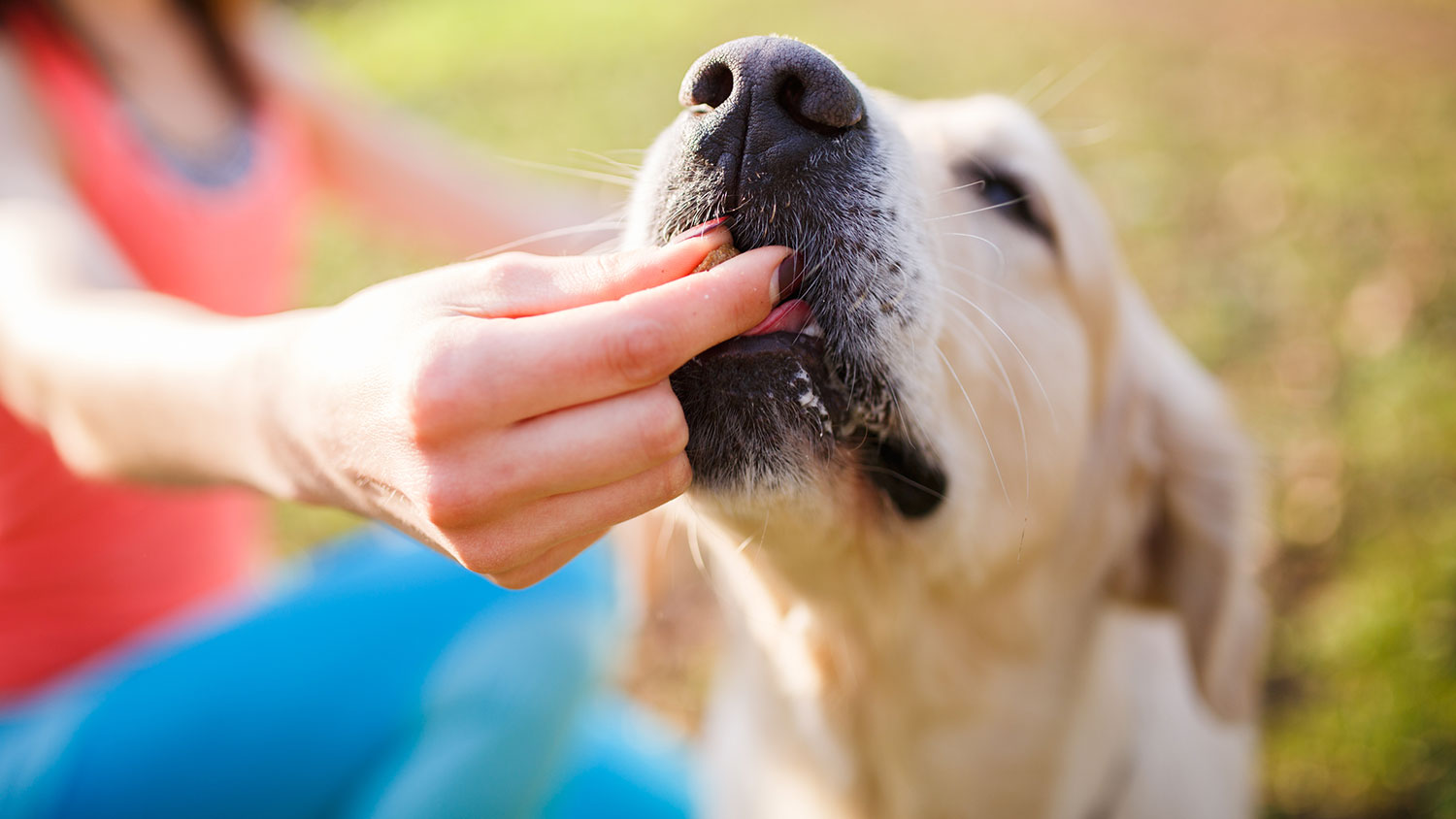When is it time to start phasing out the food used as a reward for performing a command? Your dog must be fluent in the command before you begin to wean him off treats. Fluency means that your dog truly understands the command, has performed it successfully – without a food lure in front of his nose – hundreds or thousands of times, and is able to perform that command in different locations and distraction levels.
If you don’t use a food reward after a behavior, you still need a way to tell your dog that he did the correct skill. If you don’t provide your dog with feedback after he does something correctly, your dog may become confused. A confused dog may anxiously start offering random, frantically performed skills or behaviors in hopes of earning a treat or doing something correctly. You need to either use a marker word, such as “yes” or “nice,” to designate to your dog that he did something correctly and maybe a treat or real-life reward skill is coming. (This is different than using a click from a clicker, which means the dog is always going to get a treat.) You could also use generic praise, such as “good dog” or “brilliant,” to show your approval. A marker word will tell the dog the exact instant in which he was correct, and a generic praise word will not.
-
Do two-fers and three-fers.
Have your dog do two tricks for one treat or three tricks for one treat. For example: “Sit.” Your dog sits and you say “yes.” “Touch.” Your dog nose touches your hand and you say “yes. “Shake.” Your dog extends a paw and you say “yes” and then give him one treat. That’s a three-fer! After each skill performed correctly, you told your dog he was correct with your verbal “yes.” The treat doesn’t always have to come at the end of the sequence; the treat could happen after any successfully performed skill in the sequence after the corresponding “yes.” This is similar to using variable reinforcement schedule to train your dog, in which your dog doesn’t know when the random payment is coming but is paid often enough that the behavior continues.
-
Treat from an alternate location.
Have your treats on the table nearby. Do a few tricks in your living room with your dog. “Sit.” Your dog sits and you say “yes.” “Down.” Your dog lies down and you say “yes.” You then release your dog (“ok”) and say “let’s go get a cookie!” You and your dog race to the treats on the table and you give your dog a treat. You can vary the tricks used, the location of your training session, and how far away the treats are from your training area. This teaches your dog to comply when the treats are not in your training pouch, pocket, or hand.
To reinforce the behavior, the dog actually has to like the reward in that situation; thus, if your dog dislikes the rain and you take him for a walk in the rain, the walk isn’t rewarding to your dog. In addition, your dog may like cuddling and petting at home, but cuddling and petting in public when he’d rather be doing something else more exciting, such as swimming or retrieving, is not reinforcing.
-
Use non-food, real life rewards.
Does your dog enjoy a game of fetch, playing tug-of-war, running into the backyard, playing with toys, swimming, or taking walks? Find something your dog finds valuable besides food and use that as a reward! Ask your dog for a nose touch, say “yes,” and clip his leash on for a walk. The walk is the reward for complying with the nose touch. Or ask your dog to sit, say “yes,” open the back door, and release your dog (“ok”) through the door into the fenced backyard. Your dog is rewarded for listening to the “sit” command by going outside to chase squirrels and smell interesting outside smells!
-
Use a “Zen Bowl.”
Dog trainer Hannah Branigan, owner of Wonderpups, LLC, created this technique. Using the Zen Bowl method, you release your dog to a reward in a bowl on the ground after he performs the desired skill or series of skills. While teaching the Zen Bowl method, your dog learns amazing impulse control as he must overcome the urge to run to the bowl prematurely and reward himself with the uncovered food. The bowl is usually a small plastic bowl, such as a salsa bowl, and looks different than the other bowls that the dog uses for everyday feeding and drinking. Over time, you would change the location of your training sessions and the location of the bowl. In addition, you’d increase the difficulty of the training sessions and the number of skills required to run to the Zen Bowl for the reward. Learn more specifics about training and using the Zen Bowl in this article.
Remember, you don’t want to work if you don’t receive a paycheck, so you shouldn’t expect your dog to perform all of his tasks without a paycheck either. Use some of the kibble from your dog’s regular meals for some training each day. When your dog does eat his meal from a food bowl, have your dog perform at least one skill before placing the food bowl down. Continue to use food rewards when you are asking your dog to perform skills in high distraction areas or when he is learning or mastering a new skill.
,

